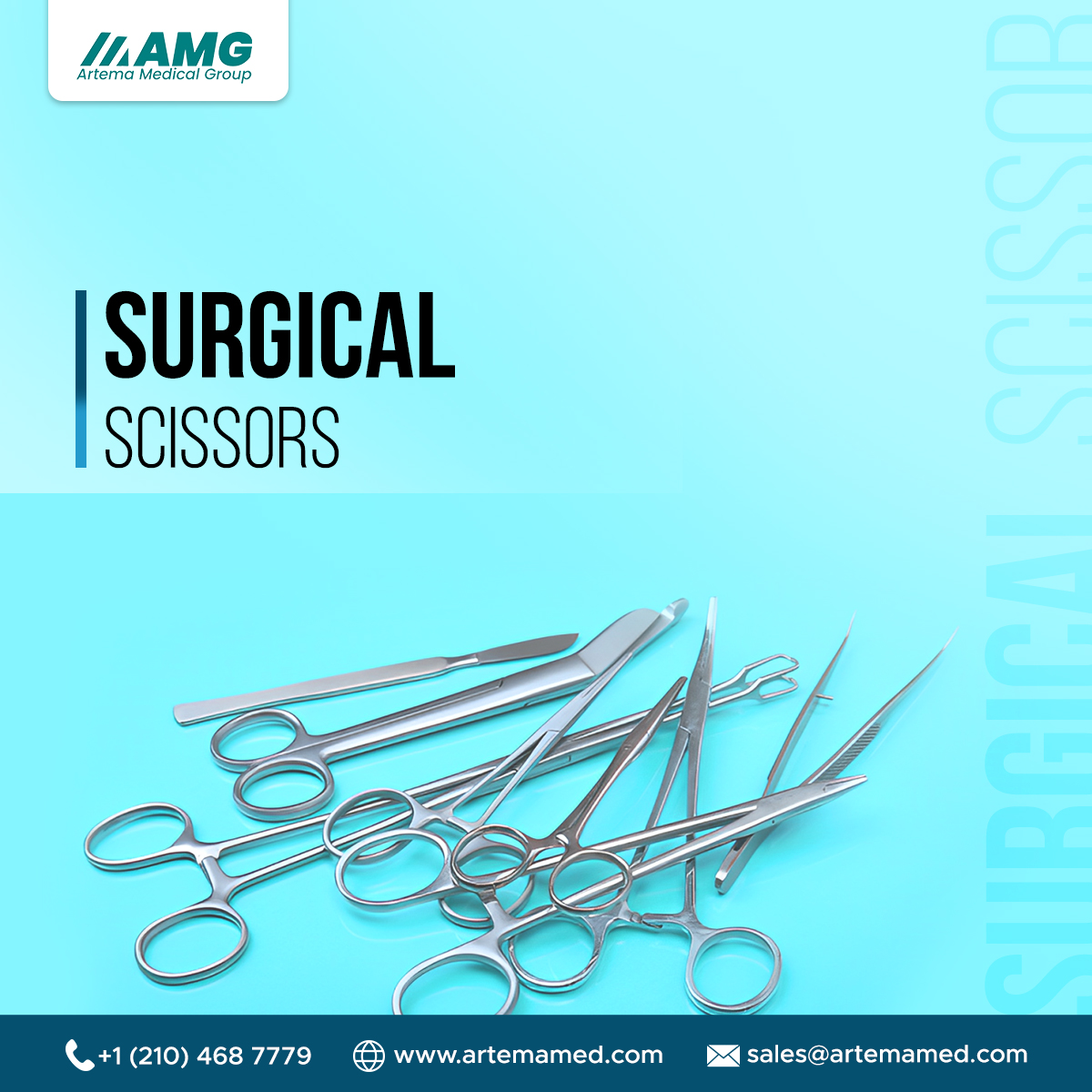Surgical Scissors: Types, Uses, and Importance in Medical Procedures
Surgical instruments are essential in every medical procedure, and among them, surgical scissors play a vital role. These specialized scissors are designed for precision cutting during surgeries and medical treatments. Whether used for cutting tissues, sutures, or materials, surgical scissors are crucial tools in the hands of skilled surgeons. Over time, different types of medical scissors have been developed to meet the needs of various procedures, with Mayo scissors being one of the most recognized names in the field.
What Are Surgical Scissors?
Surgical scissors are cutting tools used by medical professionals in surgical operations. These scissors are made with stainless steel or other high-grade metals to ensure durability and resistance to corrosion. They are sterilized before use to maintain a sterile environment and prevent infections. Their design allows for fine, controlled cutting, which is important when working on delicate tissues.
There are many different types of surgical scissors, each with its own specific purpose. Some are straight, while others are curved to reach around structures or perform specific tasks. The blade edges can also differ, with some being sharp and others blunt, depending on the function. The variety in design ensures that surgeons have the right tool for each task during an operation.
The Role of Mayo Scissors in Surgery
One of the most commonly used types of surgical scissors is the Mayo scissors. These scissors are known for their strength and durability, making them ideal for cutting through thick tissues. Named after the Mayo Clinic, these scissors come in both straight and curved forms. Straight Mayo scissors are typically used for cutting sutures and surface tissues, while the curved ones are designed to go deeper into the body and cut tougher tissue.
Mayo scissors are especially useful in orthopedic and general surgeries. Their thick blades give surgeons the power to cut through dense muscle and connective tissue without damaging surrounding structures. The handle design allows for a firm grip, offering more control during the operation. Their importance in surgical toolkits cannot be overstated, and they are found in almost every operating room.
Different Types of Medical Scissors
Besides Mayo scissors, there are other types of medical scissors that serve specific purposes. Metzenbaum scissors, for instance, are more delicate and used for cutting softer tissues. Unlike Mayo scissors, which are meant for heavier work, Metzenbaum scissors are longer and have a finer tip for more precise actions. Both types, however, fall under the general category of surgical scissors.
Medical scissors are also used outside of the operating room. In emergency settings, trauma shears help cut away clothing quickly. In wound care, smaller scissors are used to trim bandages and gauze. The quality and type of these scissors can affect how efficiently medical professionals perform their duties.
Importance of High-Quality Surgical Scissors
The quality of surgical scissors matters greatly. Low-quality scissors may become dull quickly or may not offer the precision needed for certain procedures. Sharp, durable scissors ensure that surgeons can perform operations smoothly and efficiently. A dull blade can lead to tissue damage, increased bleeding, and longer recovery times for patients.
Mayo scissors, being one of the most reliable types of surgical scissors, are often manufactured with the highest standards in mind. They are tested for sharpness, resistance to rust, and ease of handling. Their widespread use is a testament to their reliability in medical settings. Hospitals and clinics invest in high-quality medical scissors to maintain safety and performance during surgery.
Maintenance and Sterilization
Like all surgical instruments, surgical scissors need proper care. After each use, they must be cleaned and sterilized. This helps prevent the spread of infections and keeps the tools in good working condition. Medical staff are trained to handle, clean, and store these scissors correctly.
Mayo scissors, due to their frequent use, require regular inspection. Over time, even the strongest scissors can become worn or misaligned. Routine checks help identify when the scissors need sharpening or replacement. Proper maintenance not only extends the life of the instrument but also ensures patient safety.
Innovations in Surgical Scissors
Modern technology has influenced the design and production of surgical scissors. Today, some medical scissors come with titanium coatings to improve performance and durability. Others feature ergonomic handles that reduce hand fatigue during long surgeries. These innovations help make surgeries more efficient and less tiring for medical staff.
Mayo scissors have also evolved. While their basic design has remained consistent due to its effectiveness, new materials and manufacturing methods have improved their strength and precision. The goal of these innovations is always the same: to support better outcomes for patients and easier work for surgeons.
Training and Use in Medical Practice
Using surgical scissors effectively requires training and practice. Surgeons and medical staff learn how to choose the right type of scissors for each procedure. They are taught how to hold and use them to avoid injury to both the patient and themselves. Knowing when to use Mayo scissors versus another type of medical scissors is a skill developed over time.
In medical schools and training programs, students are introduced to various surgical scissors early on. Practice with these tools helps them build confidence and accuracy. By the time they enter real medical settings, they are familiar with how surgical scissors function and how to use them safely.
Final Thoughts
Surgical scissors are a critical component of every medical procedure. From general surgeries to specialized operations, they provide the cutting precision needed for success. Among them, Mayo scissors stand out for their durability and versatility. Alongside other medical scissors, they form an essential part of every surgical toolkit.
The continued development and maintenance of high-quality surgical scissors ensure better care for patients and easier work for healthcare providers. With proper training and regular upkeep, these tools can serve reliably for years. Whether in a high-tech hospital or a small clinic, surgical scissors remain one of the most trusted and important instruments in the medical world.
More info: Artema Medical













